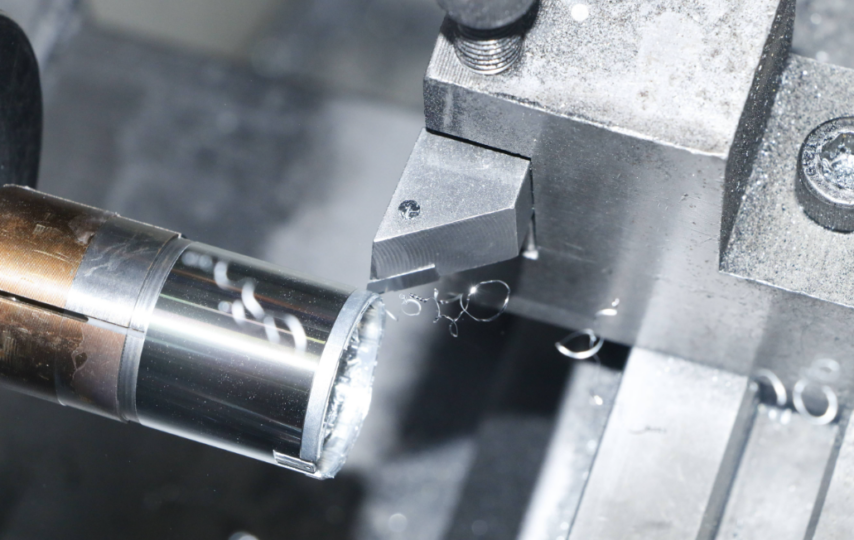CNC turning is a machining process that involves the use of Computer Numerical Control (CNC) machines to shape and cut materials like metal or plastic. These machines use rotary tools to create cylindrical parts with precise dimensions and finishes.
What is CNC Turning?
CNC turning is a subtractive manufacturing process where a piece of material, often called a workpiece or blank, is rotated on a lathe. Cutting tools remove material from the workpiece to achieve the desired shape.
What is cnc turning machines?
CNC turning machines, also known as CNC lathes, are computer-controlled machining tools used to perform precision machining operations on cylindrical workpieces. These machines are a fundamental part of modern manufacturing and are employed to create a wide range of parts, from simple shafts and fasteners to more complex components.
Components of CNC turning machines:
Workpiece Holding: CNC turning machines have a chuck or collet that securely holds the workpiece. The workpiece is rotated about its axis during the machining process, allowing for material removal.
Cutting Tools: Various cutting tools, such as inserts, drills, and tool bits, are mounted on the tool turret or tool post. These tools are used to remove material from the workpiece to create the desired shape and dimensions.
Tool Turret or Tool Post: CNC turning machines are equipped with a tool turret or tool post that can hold multiple tools. This allows for automatic tool changes during the machining process, improving efficiency and versatility.
CNC Control System: The heart of the CNC turning machine is its computer control system. Operators program the machine using G-code or other programming languages to specify the toolpaths, speeds, feeds, and other machining parameters.
Spindle: The spindle is responsible for rotating the workpiece. The speed of rotation (RPM) can be controlled, allowing for optimal cutting conditions.
X, Y, and Z Axes: CNC turning machines have axes that guide tool movements. The X-axis controls tool movement along the longitudinal axis of the workpiece, the Z-axis controls tool movement along the diameter of the workpiece, and some machines have additional axes for more complex machining tasks.
Coolant System: A coolant system is often used to lubricate cutting tools, reduce friction and heat, and remove chips from the cutting area. This is essential for maintaining tool life and part quality.
Control Panel: CNC turning machines have a control panel or interface where operators can input commands, monitor the machining process, and make adjustments as needed.
Types of cnc turning tools
CNC turning tools are essential for the machining process in CNC turning machines. These tools are designed for cutting, shaping, and finishing workpieces during the turning operation. There are several types of CNC turning tools, each serving a specific purpose.
Here are some common types of CNC turning tools:
Turning Inserts: These are replaceable cutting tips that fit into the toolholders on the tool turret. Turning inserts come in various shapes, including square, triangular, and diamond, and are made from materials like carbide, ceramics, and high-speed steel (HSS). Different grades and coatings are available for specific materials and cutting conditions.
Boring Bars: Boring bars are used for enlarging existing holes or creating internal features, such as bores and cavities. They are available in various lengths and configurations to accommodate different workpiece geometries.
Parting and Grooving Tools: Parting tools are used to cut off workpieces, creating separate components. Grooving tools, on the other hand, are designed to cut narrow, shallow grooves or recesses on the workpiece’s surface.
Threading Tools: Threading tools are used to create threads on the workpiece, either external threads (on the outer surface) or internal threads (in holes). They are available in various thread profiles and sizes.
Facing Tools: Facing tools are used to machine flat surfaces on the end of the workpiece. They are often used for creating features like shoulders and flats.
Knurling Tools: Knurling tools create a textured pattern on the workpiece’s surface, improving grip or aesthetics. They are commonly used on cylindrical parts, such as handles or knobs.
Drill Bits: Drill bits in CNC turning are used to create holes in the workpiece, typically for applications such as dowel pins, fasteners, or internal features.
Center Drills: These tools are used to create a small conical depression at the center of the workpiece, providing a starting point for drilling or other machining operations.
Cutoff Tools: Cutoff tools are specifically designed for parting and separating the workpiece from the bar stock. They need to handle high stresses and maintain stability during the cutting process.
Grooving and Threading Inserts: These inserts are designed for creating grooves and threads on the workpiece. They come in various profiles and are typically mounted on specialized toolholders.
Form Tools: Form tools are used to create specific shapes or profiles on the workpiece, such as ovals, radii, and custom contours.
Multi-Tool Holders: Some CNC turning machines are equipped with multi-tool holders that can hold multiple tools simultaneously, allowing for quick tool changes and reducing setup times.
Types of CNC Turning Services
CNC turning services encompass a wide range of machining operations performed on CNC (Computer Numerical Control) turning machines to create precise, cylindrical components. These services are vital in various industries, including aerospace, automotive, medical, and manufacturing.
Here are some common types of CNC turning services:
General CNC Turning: This includes fundamental turning operations like facing, turning, and taper turning to produce cylindrical parts with specific dimensions and surface finishes.
CNC Threading: Creating threads, either internal or external, with various thread profiles, such as metric, imperial, or ACME threads.
Boring: Enlarging existing holes, creating internal features, and improving bore concentricity and roundness.
Drilling: Producing holes in the workpiece with various sizes and depths to meet specific project requirements.
Parting and Grooving: Cutting off workpieces to create separate components and machining narrow grooves or recesses on the workpiece’s surface.
Knurling: Adding textured patterns to cylindrical parts for enhanced grip or aesthetic purposes.
Facing: Machining flat surfaces on the end of the workpiece, often used for creating features like shoulders and flats.
Contouring and Profile Machining: Creating complex shapes, profiles, and contours on the workpiece, enabling the production of custom components.
Tapping: Producing internal threads in holes for screws, bolts, and other fasteners.
Center Drilling: Creating small conical depressions at the center of the workpiece to serve as starting points for drilling or other machining operations.
Cylindrical Grinding: Using grinding attachments on CNC turning machines to achieve tight tolerances and specific surface finish requirements.







